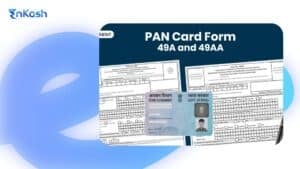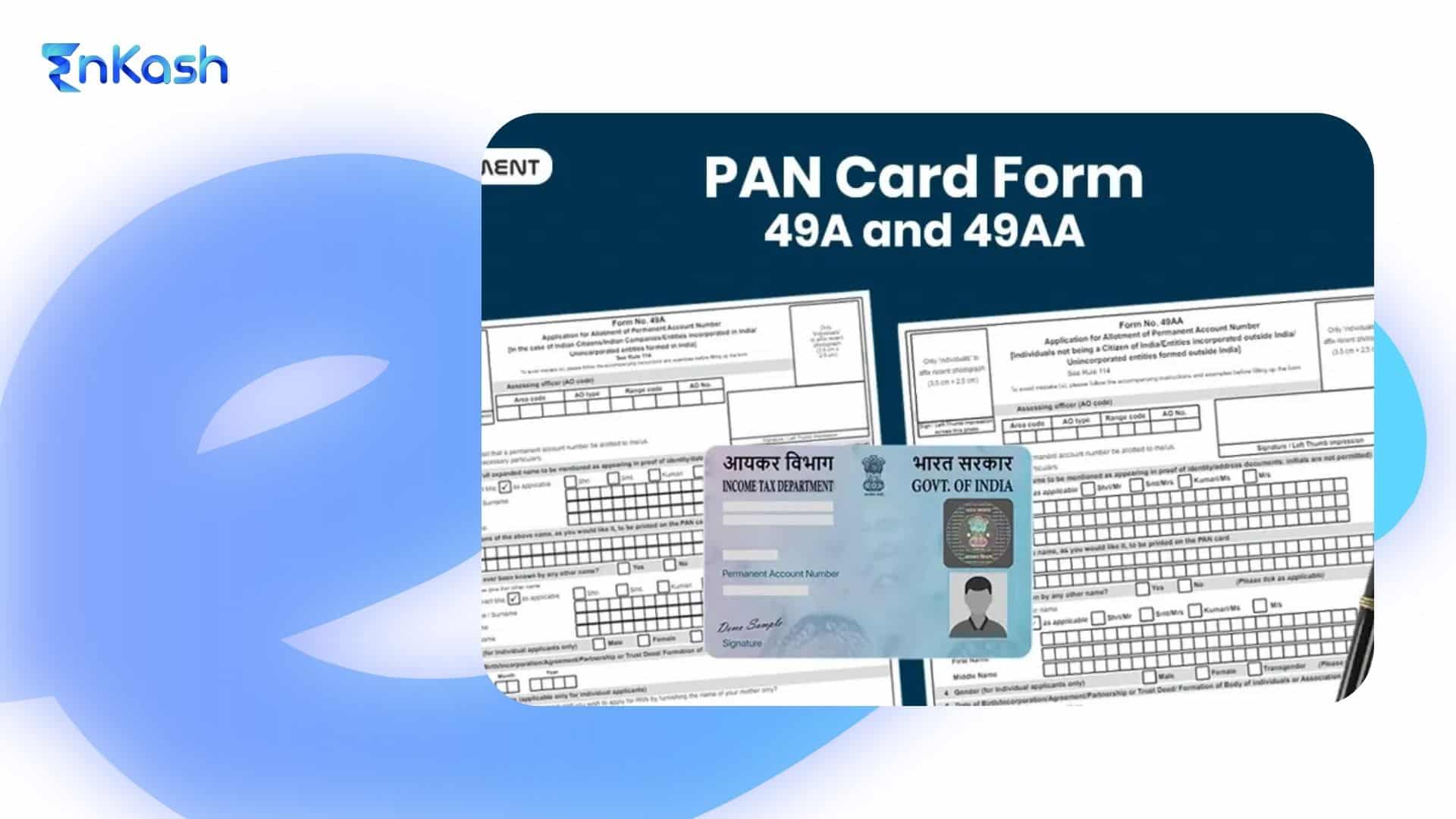The cash flow statement is a fundamental accounting document which shows how much money is flowing in and out of a business over a period of time. It offers information on whether a company can raise cash, pay its bills, and anticipate its future needs. The indirect method of cash flow statement is one of the widely used methods for its preparation.
Instead of displaying the cash transactions like in the direct method, the cash flow statement format with the indirect method starts with the net income and adjusts for non-cash items and movements in working capital. The blog looks at the indirect method statement of cash flows, its key components, benefits and drawbacks. We will also look at preparation steps and indirect method cash flow examples for better understanding.
Understanding the Indirect Method of Cash Flow
The indirect method of cash flow is a way of presenting a company’s cash flow starting with net income on the income statement. It updates this number by subtracting or including non-cash expenses and working capital account changes, converting accrual net income into actual cash flows from operating activities. This approach reconciles the net income and the actual cash flows generated from operations, which makes it possible to closely track the impact of changes in assets and liabilities on cash flow.
The indirect approach is usually preferred to the direct one because it relies on data already present in most accounting books. As accrual accounting is utilized by most big companies and revenues are recognized when they’re generated, not when the money arrives, the indirect approach makes more sense. Not only does it make data entry simpler, it gives stakeholders insights to compare financial performance across different time periods.
Indirect Method vs. Direct Method
Indirect and direct are two main ways to prepare cash flow statements, each with a different way of reporting cash flows from operations.
1. Starting Point and Structure
The indirect method commences with net income and adjusts for non-cash transactions (depreciation, amortization) and working capital movements (accounts receivable, inventory, accounts payable). This transforms net income from accrual to cash flow.
The direct method lists real-time cash inflows and outflows occurring during operations, such as cash received from customers or paid to suppliers, which is the more direct way of displaying cash-specific transactions without any adjustment.
Read more: Account Receivable
2. Level of Detail
The direct method allows cash flows to be tracked at a much finer level, enabling stakeholders to better understand individual cash flows. This facilitates accurate cash monitoring as transactions of actual money being produced and spent are shown.
The indirect method does not provide detailed information on transactions but allows a straightforward reconciliation between net income and cash flow to see how the stated profits correlate with the cash generated.
3. Ease of Preparation
For the vast majority of businesses, the indirect method of cash flow creation is simpler as it uses readily available information in income statements and balance sheets. It’s helpful for businesses doing accrual accounting as adjustments correspond to typical non-cash entries.
The direct method documents individual cash payments, which is time-consuming, expensive and complex, especially for large enterprises.
4. Overall Impact on Cash Flow Statement
The two processes generate the same total cash flow from operations, however, the methods vary. The direct approach enables transparency for cash transactions, while the indirect approach is simpler to read and compliant with accrual-based reports in income statements and balance sheets.
Key Components of the Cash Flow Statement Format Using the Indirect Method
Operating, investing and financing are the three main sections you will find in a typical cash flow statement format, regardless of the preparation method. These sections in the indirect method provide clarity on how cash flow is generated or spent.
Operating Activities
In the operating activities portion, non-cash expenses are added back to or deducted from net income to arrive at cash flow from operations. Here are some of the common non-cash changes:
- Depreciation and Amortization: Non-cash items that lower net income without affecting cash flow.
- Losses or Earnings on Asset Sales: These are separated from net income as they aren’t operations-related.
- Working Capital Changes: Accounting for accounts receivable, inventory, and accounts payable changes to include cash effects of these assets and liabilities.
Investing Activities
Investing includes buying and selling long-term investments such as property, plant, equipment (PPE), etc. Here are some typical investing cash flow examples:
- Acquisition of PPE: Cash outflow resulting from a company purchasing resources for its business.
- PPE sale: An inflow of cash when a business disposes of assets it no longer requires.
- Investment Purchase/Sale: Cash outflow and inflow from the purchase or sale of investments.
Financing Activities
Financing activities involve deals that impact the debt and equity of the firm, including stock sales or loan repayments. Here are some examples of financing activities:
- Sale of Securities: Money that is received from the sale of bonds, loans, or shares.
- Debt Repayment: Cash outflow to repay debts.
- Dividends Paid: Cash outflow when dividends are paid to shareholders.
Read more: Cash Flow Analytics
Steps to Prepare a Cash Flow Statement Using the Indirect Method
Let’s look at the steps involved in the indirect method of cash flow preparation:
Step 1: Collect the Essential Financial Data
Firstly, collect income statements and balance sheets for the reporting period. They include the required data of net income, non-cash expenses and working capital variations. The balance sheet will show the movements in asset and liability accounts and the income statement will indicate net income and other non-cash costs.
Read more: Balance Sheet Formats
Step 2: Calculate Cash Flow from Operating Activities
- Start with Net Income: Write net income at the top of the cash flow statement.
- Account for Non-Cash Items: Include non-cash costs such as depreciation, amortization, and stock-based compensation.
- Adjust for Gains/Losses on Asset Sales: Deduct gains and include losses on the asset sales to eliminate non-operating items from net income.
- Adjust for Working Capital Changes:
- Deduct asset increases (inventory or accounts receivable).
- Add asset decreases.
- Add liability increases (accrued expenses or accounts payable).
- Deduct liability decreases.
The outcome of these adjustments is net cash from operations.
Step 3: Calculate Cash Flow from Investing Activities
Investing activities involve the purchase and sale of long-term assets. Here is how you can determine cash flow from investing activities:
- Add Sale of Assets: Income generated from selling assets like machinery.
- Deduct Purchase of Assets: Cash payments on the acquisition of new assets or investments.
The sum is recorded as net cash from investment activities.
Step 4: Calculate Cash Flow from Financing Activities
Debt and equity transactions fall under the purview of financing activities.
- Include Income from Selling Debt or Equity: Cash inflows from selling bonds, stocks, or other financing forms.
- Deduct Debt Repayments: Cash outflows due to repayment of loans.
- Deduct Dividends Paid: Outflow of cash from dividend payouts to the shareholders.
These add up to net cash from financing activities.
Step 5: Determine Net Cash Flow and Ending Cash Balance
Add the cash flow values derived from operating, investing, and financing activities. The outcome is the total increase or decrease of cash for the period.
To determine the ending cash balance, add the net increase/decrease to the initial cash balance.
Example of the Indirect Method Statement of Cash Flows
Let’s understand the cash flow statement format using the indirect method better with an example of XYZ Corp. Here is how XYZ Corp uses the indirect method of cash flow preparation:
Cash Flow from Operating Activities
- Net Income: ₹90,000
- Add Depreciation: ₹15,000
- Add Amortization: ₹7,000
- Deduct Increase in Accounts Receivable: ₹6,000
- Add Decrease in Inventory: ₹4,000
- Deduct Decrease in Accounts Payable: ₹7,000
Net Cash from Operating Activities: ₹103,000
Cash Flow from Investing Activities
- Proceeds from Sale of Equipment: ₹16,000
- Purchase of Property: ₹40,000
Net Cash from Investing Activities: ₹24,000
Cash Flow from Financing Activities
- Proceeds from Issuance of Stock: ₹30,000
- Payment of Dividends: ₹8,000
- Repayment of Debt: ₹9,000
Net Cash from Financing Activities: ₹13,000
Total Cash Flow
- Net Cash Flow for Period: ₹103,000 (Operating) – ₹24,000 (Investing) + ₹13,000 (Financing) = ₹92,000
- Beginning Cash Balance: ₹25,000
- Ending Cash Balance: ₹117,000
We hope, you now have clarity on how the main sections of cash flow affect the ending cash balance.
Read more: Cost Accounting and Financial Accounting
Advantages and Disadvantages of the Indirect Method Cash Flow
When utilizing the indirect method to create a cash flow statement, you’ll need to weigh the pros and cons. This approach is used for its ease and compatibility with common accounting records and is convenient for most organizations. However, as with all accounting methods, the indirect approach has limitations and potential risks. Let’s examine the advantages and disadvantages of the indirect method of cash flow creation.
Advantages
- Easy to Prepare: Indirect calculation leverages information available from the balance sheet and income statement.
- Adjustment with Net Income: Adjusting net income against cash flow gives companies a good idea of how accounting profits compare to cash flow.
- Similarity: Since the indirect approach is used by most companies, it makes business and industry comparability of data easier.
Disadvantages
- Fewer Details for Cash Transactions: The indirect option does not display individual cash receipts and payments, which is less intuitive.
- Manipulation Potential: Net income is occasionally manipulated to correct for non-cash items and working capital variation.
- Limited Reporting for Cash Management: The indirect approach isn’t really as efficient for monitoring individual cash transactions.
Read more: Account Payable
Mistakes to Avoid When Creating an Indirect Method Cash Flow Statement
The indirect method of cash flow preparation is more detail-oriented. Here are some of the typical mistakes to avoid:
- Errors In Adjustments: When net income does not properly account for non-cash expenses, it will lead to inaccurate operating cash flow.
- Misallocation of Cash Flows: Incorrect allocation of cash flows between operating, investing and financing can warp the cash flow statement.
- Not Including Working Capital Adjustments: Failure to include changes in accounts receivable, inventory, and accounts payable can result in errors in cash flow.
- Inconsistent Opening and Ending Balances: Failure to reconcile beginning and ending cash balances will result in a false statement of a company’s cash position.
Conclusion
The indirect method of cash flow reporting is a great resource for gaining insights into a company’s financial condition. By starting from net income and adjusting for non-cash items and working capital adjustments, the indirect method makes it easy to see how accounting profits compare to cash flow. While not capturing transaction-level cash information, its simplicity and uniformity have made it a popular solution for organizations and stakeholders.
Anyone working with financials should know how to create and analyze a cash flow statement format using the indirect method. Through understanding the effects of each change, stakeholders are able to make better decisions regarding a company’s cash flows, opportunities and sustainability.
Knowing the cash flow statement indirect method is crucial to learning more about a company’s actual financial position.
FAQs
Why does the indirect approach begin with net income?
The indirect method begins with net income because that’s an accrual figure representing earnings considering revenue and expenses. Once net income is adjusted for non-cash transactions and working capital variations, the indirect process converts it to cash so it provides a precise picture of operating cash flow.
Why do most businesses prefer the indirect method to direct for cash flow preparation?
Most companies prefer the indirect method as it is more simple to build from available income and balance sheet data. The indirect method doesn’t require documenting each cash transaction individually, saving time. It also synchronizes net income with cash flow, enabling stakeholders to see the correlation between reported profit and cash flow.
What are the primary parts of a cash flow statement prepared using the indirect method?
The indirect method cash flow statement consists of three sections – operating, investing and financing activities. Operating activities involves net income and adjustments for non-cash items and changes in working capital. Investing activities involves the investment and sale of long-terms assets. Financing activities involves debit and equity transactions.
How is net income adjusted according to the indirect method of cash flow preparation?
The adjustments made to the net income involve non-cash operating expenses (depreciation and amortization) and working capital changes (accounts receivable, inventory, and accounts payable changes). Profits or losses from the sale of assets that don’t reflect operating cash flows are also accounted for to make sure they don’t skew the cash flow numbers from operating activities.
What happens to non-cash items such as depreciation and amortization when using the indirect method?
The indirect method adds depreciation and amortization back to net income. Since these are non-cash expenses that decrease net income but do not impact cash flow, adding them back guarantees that the cash flow from operating activities only shows actual cash transactions.
How are working capital changes handled in the indirect cash flow statement?
Working capital adjustments are based on current accounts of assets and liabilities. Assets such as receivable or inventory rises are deducted from net income because they represent cash outflows. On the other hand, increases in liabilities such as accounts payable are added to net income since they are cash inflows from postponed cash payments.
How does the indirect method tell you if a company is financially healthy?
The indirect method emphasizes the connection between a company’s net income and cash produced. It shows how efficiently a company converts reported earnings into cash, which is important for determining liquidity, solvency, and efficiency. If there are consistent differences between net income and cash flow, it can indicate an accounting issue, like poor working capital.
How does the indirect method benefit stakeholders when analyzing cash flow?
For the stakeholders, the indirect method presents an easy comparison between net income and cash flow, and it gives them a quick view of how accrual profits get converted into cash flow. It’s this information that enables investors and creditors to evaluate a firm’s liquidity position and whether or not it can continue to operate, repay debts and fund future growth.
How do investing and financing activities appear in the indirect method?
Investment activities represent cash invested or received on long-term assets, and financing activities represent cash flows from debt and equity transactions. These sections offer a holistic understanding of a company’s capital spending and financing strategies.












